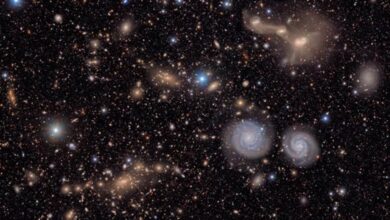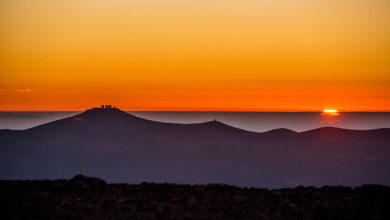How the dust of the Sahara travels all over the world
Beautiful sunrises and beautiful sunsets with intense colors are the result of one of the most fascinating phenomena in nature .

A satellite captured this phenomenon in the Sahara desert. / Photo: Pixabay
The Woman Post | Maria Lourdes Zimmermann
Listen to this article
Leer en español: El polvo del Sahara: ¿Qué hace y cómo viaja hasta América?
The phenomenon captured by the GOES-East satellite shows the image of an expansive column of dust from the Sahara desert traveling west through the Atlantic Ocean.
According to the National Oceanic and Atmospheric Administration NOAA's Hurricane Research Division, every three to five days from late spring to early fall, a dusty air mass known as the Saharan Air Layer (SAL) forms over the Sahara Desert and moves west through the tropical North Atlantic.
SAL, which stretches around 5,000 to 20,000 feet in the atmosphere, can be transported several thousand miles, reaching the Caribbean, Florida, and the US Gulf Coast. When winds are particularly strong, some of this dust also blows further south into the Amazon River basin in South America, where the minerals in the dust replenish nutrients in rainforest soils, which are continually depleted by tropical rains in a perfect recycling phenomenon.
NOAA estimates that each year more than 100 million tons of dust 3 to 5 kilometers thick blow from Africa to America.
The phenomenon began to be observed in an area of West Africa a week ago and has now traveled more than 5,000 kilometers to the Caribbean, including the continental United States.
The Institute of Natural Sciences of the University of Puerto Rico has stated that the current SAL has the highest concentrations of dust particles observed in the region in the last half-century.
4 impacts of Sahara dust on the planet
1. According to Santiago Gassó, Argentine geophysicist and NASA expert, "the dust is basically crushed rock, very fine, and is made up of different chemical elements," the expert told BBC Mundo.
"Many of those elements are nutrients that are used by plants, such as phosphorous and nitrogen, and all of these nutrients are contained in the dust, which travels and is deposited by rain or simply falls on the jungle." generating an enrichment of the Amazon soils.
Just like the jungle, the oceans can also be enriched. If the dust is very heavy, it sinks at the bottom of the ocean, but if the dust takes time to descend (either because it is light or there is a lot of ocean turbulence), the area where the microorganisms such as phytoplankton or animal bacteria are can use it, and release all these nutrients that are useful, said the expert to the English environment.
2. But its presence in the sea can also harm it, allowing toxic algae blooms or generating undesirable impacts on coral areas. "It is a principle similar to that of fertilization. Because just as there may be chemical elements that are useful for feeding or growing plants, there are also toxic elements, " explains Santiago Gassó.
"For example, copper is toxic to certain bacteria and other very important microorganisms at the base of the marine ecological pyramid. It has been seen that corals can also be attacked by fungi that are in the dust. So when these elements in the dust travel to the other side of the Atlantic they are deposited on the Caribbean Sea and this sediment falls and reaches the corals that assimilate this toxicity, making them sick. "
3. Another of the impacts according to NASA, is related to the effect on air quality. It is known that the dry and dusty air associated with SAL causes cloudy skies over the areas where it blows, increasing air pollution, generating changes in air quality that are detrimental to health by increasing its poor quality.
You can read: Fighting the COVID-19 pandemic through testing
4. It can also help suppress the development of hurricanes and tropical storms in the Atlantic basin due to its dense, dry air. The Argentine geophysicist and NASA expert explains that: "When there is dust in suspension, part of the solar energy is not reaching the surface of the ocean and therefore there is a lower temperature."
"The ocean doesn't get as hot and it changes, for example, the way ocean water evaporates. And evaporation of ocean water is what fuels hurricanes, it's a whole succession of events."
The big question that arises is: Why do thousands of tons of dust from the Sahara fly around the planet, contributing to various natural cycles?
NASA affirms that in the Sahara desert there are many sectors with depressions, old lakes that have dried up for thousands of years and when there are rains or precipitations, those depressions fill with water, generating natural sedimentation processes. When in the summer periods the lake water evaporates, the sediments that remain at the bottom are blown away by strong winds, lifting thousands of tons of dust that travel from one continent to another, allowing a wonderful phenomenon to generate diverse impacts between continent and continent resulting in a beautiful, natural, chain effect.




